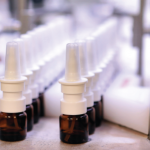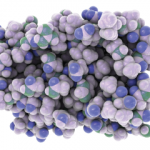 ATLANTA—Anifrolumab is a fully human monoclonal antibody that binds to subunit 1 of the type I interferon (IFN) receptor. It blocks all type I interferon activity, including IFN-α, IFN-β and IFN-ω, which are cytokines that activate immune cells and upregulate antigen presentation. Between 60% and 80% of adults with systemic lupus erythematosus (SLE) have upregulation of type I interferon, which can serve as a biomarker for disease activity.
ATLANTA—Anifrolumab is a fully human monoclonal antibody that binds to subunit 1 of the type I interferon (IFN) receptor. It blocks all type I interferon activity, including IFN-α, IFN-β and IFN-ω, which are cytokines that activate immune cells and upregulate antigen presentation. Between 60% and 80% of adults with systemic lupus erythematosus (SLE) have upregulation of type I interferon, which can serve as a biomarker for disease activity.
TULIP-1 (Treatment of Uncontrolled Lupus via the Interferon Pathway), a phase 3 randomized, double-blind, placebo-controlled clinical trial (NCT02446912) evaluated the efficacy and safety of anifrolumab in patients with moderate to severe SLE. The results of the study were presented during the 2019 ACR/ARP Annual Meeting in November.1
To participate in the study, SLE patients had to meet ACR criteria, with an SLE Disease Activity Index 2000 (SLEDAI-2K) of 6 or more and a British Isles Lupus Assessment Group (BILAG) score of at least 1A or 2B. Patients were randomized to receive 300 mg of intravenous (IV) anifrolumab, 150 mg of IV anifrolumab or placebo every four weeks. Additionally, patients continued their standard therapy, which was required to remain at a stable dosing regimen throughout the study. The only deviation allowed from standard-of-care therapy was steroid tapering for patients receiving 10 mg or more of prednisone or an equivalent.
The study’s primary end point was the difference in the SLE responder index between anifrolumab and placebo-treated patients after one year of therapy. The study also assessed numerous secondary endpoints, including safety.
The Results
All 457 randomized patients received at least one dose of the study drug and were included in the analyses. In total, 180 patients received 300 mg of anifrolumab, 93 patients received 150 mg of anifrolumab and 184 patients received placebo. The baseline characteristics and completion rates were similar across the treatment groups.
At Week 52, no difference in the SLE responder index rates existed between 300 mg anifrolumab-treated patients (36%; 65/180) and placebo-treated patients (40%; 74/184). The differences from baseline in secondary endpoints favored 300 mg anifrolumab-treated patients compared with placebo-treated patients. One secondary endpoint was the reduction of oral corticosteroid dosage, which was 48.8% for 300 mg anifrolumab-treated patients vs. 32.1% for placebo-treated patients, a difference of 16.7% (95% CI: 3.5, 29.8).
Serious adverse events occurred in 10.8% of 150 mg anifrolumab-treated patients and 13.9% of 300 mg anifrolumab-treated patients compared with 16.3% of placebo-treated patients. Herpes zoster occurred in 5% of patients treated with anifrolumab compared with 1.6% of placebo-treated patients.



